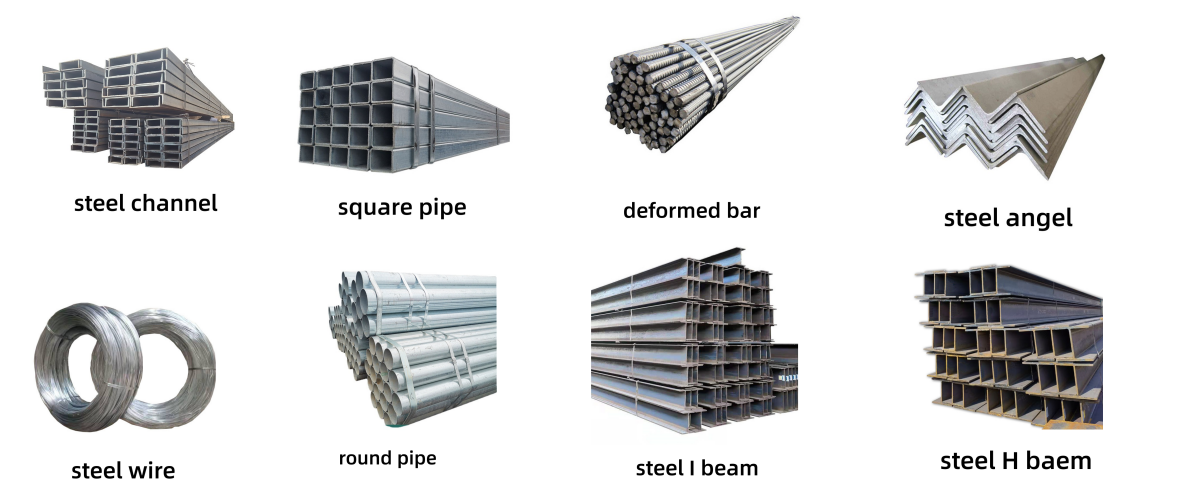Looking back at 2023, the overall global macroeconomic performance was weak, with strong expectations and weak reality in the domestic market colliding fiercely. Steel production capacity continued to be released, and downstream demand was generally weak. External demand performed better than domestic demand, and steel prices showed a trend of rising and falling, fluctuating and downward.
Respectively, in the first quarter of 2023, the prevention and control of the COVID-19 will be smoothly transformed, and the macro expectation will be good, driving up the price of steel; In the second quarter, the US debt crisis appeared, the domestic economy was weak, the contradiction between supply and demand was intensified, and the steel price plummeted; In the third quarter, the game between strong expectations and weak reality intensified, and the steel market fluctuated weakly; In the fourth quarter, macro expectations improved, funding increased, steel supply slowed down, cost support remained, and steel prices began to rebound.
In 2023, the average comprehensive price of steel in China was 4452 yuan/ton, a decrease of 523 yuan/ton from the average price of 4975 yuan/ton in 2022. The year-on-year decrease in prices ranged from large to small, including section steel, special steel, steel bars, thick plates, hot-rolled products, and cold-rolled products.
Overall, in 2023, the steel market in China will mainly exhibit the following characteristics:
Firstly, the overall steel production remains high. According to data from the National Bureau of Statistics, from January to November 2023, China’s crude steel production reached a total of 952.14 million tons, a year-on-year increase of 1.5%; The cumulative production of pig iron reached 810.31 million tons, a year-on-year increase of 1.8%; The cumulative production of steel reached 1252.82 million tons, a year-on-year increase of 5.7%. It is estimated that in 2023, China’s crude steel production will reach around 1.03 billion tons, a year-on-year increase of 1.2%.
Secondly, the significant increase in steel exports has become the key to balancing domestic supply and demand. In 2023, there is a significant advantage in domestic steel prices and sufficient overseas orders, resulting in a significant increase in export volume. According to statistics from the General Administration of Customs, from January to November 2023, China exported 82.66 million tons of steel, a year-on-year increase of 35.6%. The China Iron and Steel Industry Association predicts that China’s steel exports will exceed 90 million tons throughout 2023.
At the same time, China’s rich variety, high-quality and affordable steel products support downstream industries to participate in international competition, and the manufacturing industry’s large exports drive indirect exports of steel. It is estimated that in 2023, China’s indirect export volume of steel will be approximately 113 million tons.
Thirdly, downstream demand is generally weak. In 2023, China’s economy will recover steadily, but CPI (Consumer Price Index) and PPI (Factory Price Index of Industrial Products) will continue to operate at a low level, and the growth rate of fixed assets investment, infrastructure investment and manufacturing investment will be relatively low. Affected by this, the overall demand for steel in 2023 will be weaker than in previous years. It is estimated that in 2023, the consumption of crude steel in China is about 920 million tons, a year-on-year decrease of 2.2%.
Fourthly, the high cost operation has led to a continuous decline in the profitability of steel enterprises. Although coal and coke prices have declined in 2023, steel companies are generally under significant cost pressure due to the sustained high operation of iron ore prices. Data shows that as of the end of 2023, the average cost of molten iron for domestic steel enterprises has increased by 264 yuan/ton compared to the same period in 2022, with a growth rate of 9.21%. Due to the continuous decline in steel prices and rising costs, the profits of steel companies have significantly shrunk. In 2023, the sales profit margin of the steel industry was at the bottom level of major industrial industries, and the industry’s loss area continued to expand. According to statistics from the Steel Association, in the first three quarters of 2023, the key statistics showed that the operating revenue of steel enterprises was 4.66 trillion yuan, a year-on-year decrease of 1.74%; The operating cost was 4.39 trillion yuan, a year-on-year decrease of 0.61%, and the decrease in revenue was 1.13 percentage points greater than the decrease in operating cost; The total profit was 62.1 billion yuan, a year-on-year decrease of 34.11%; The sales profit margin was 1.33%, a year-on-year decrease of 0.66 percentage points.
Steel social inventory has always been relatively

Post time: Jan-23-2024

